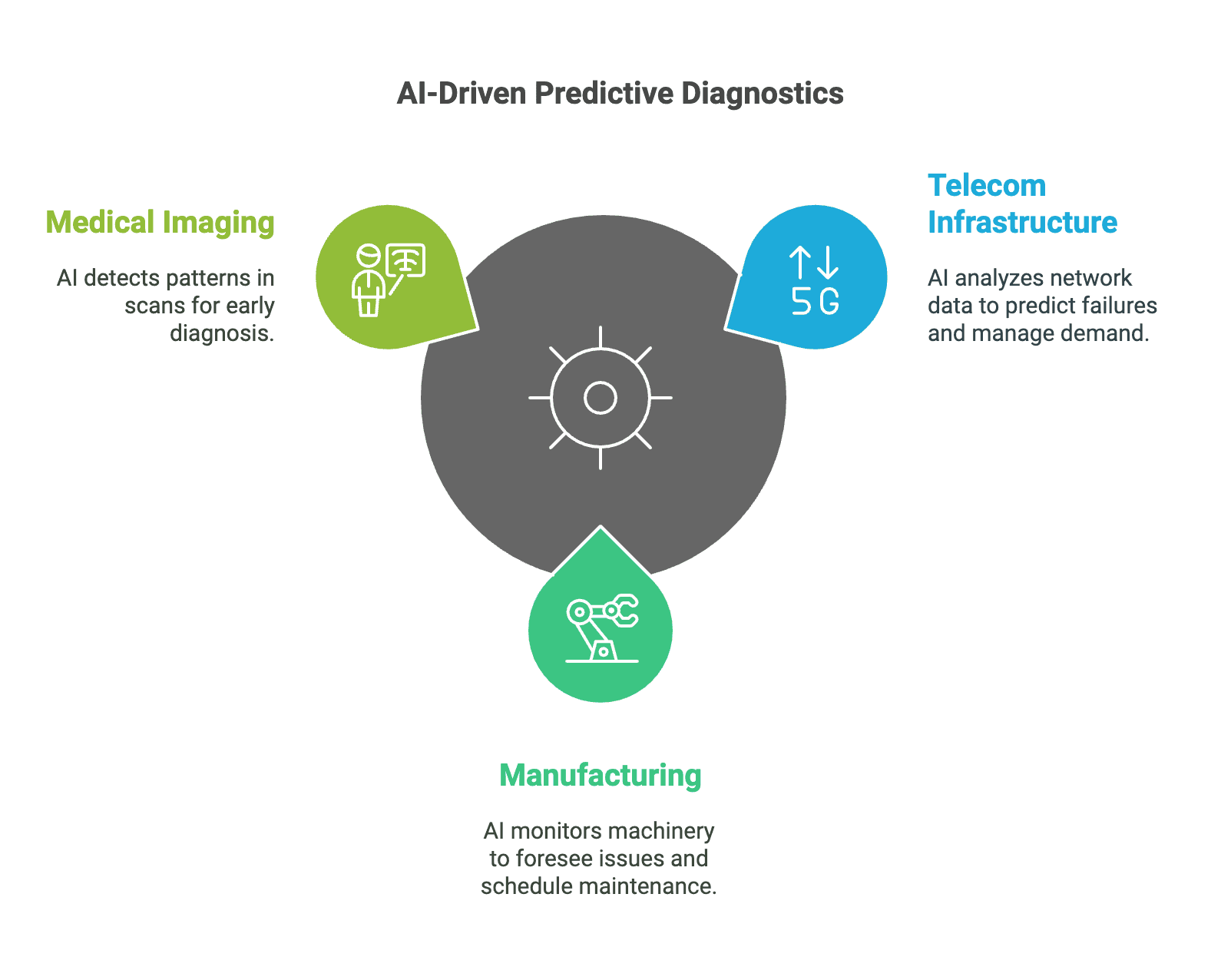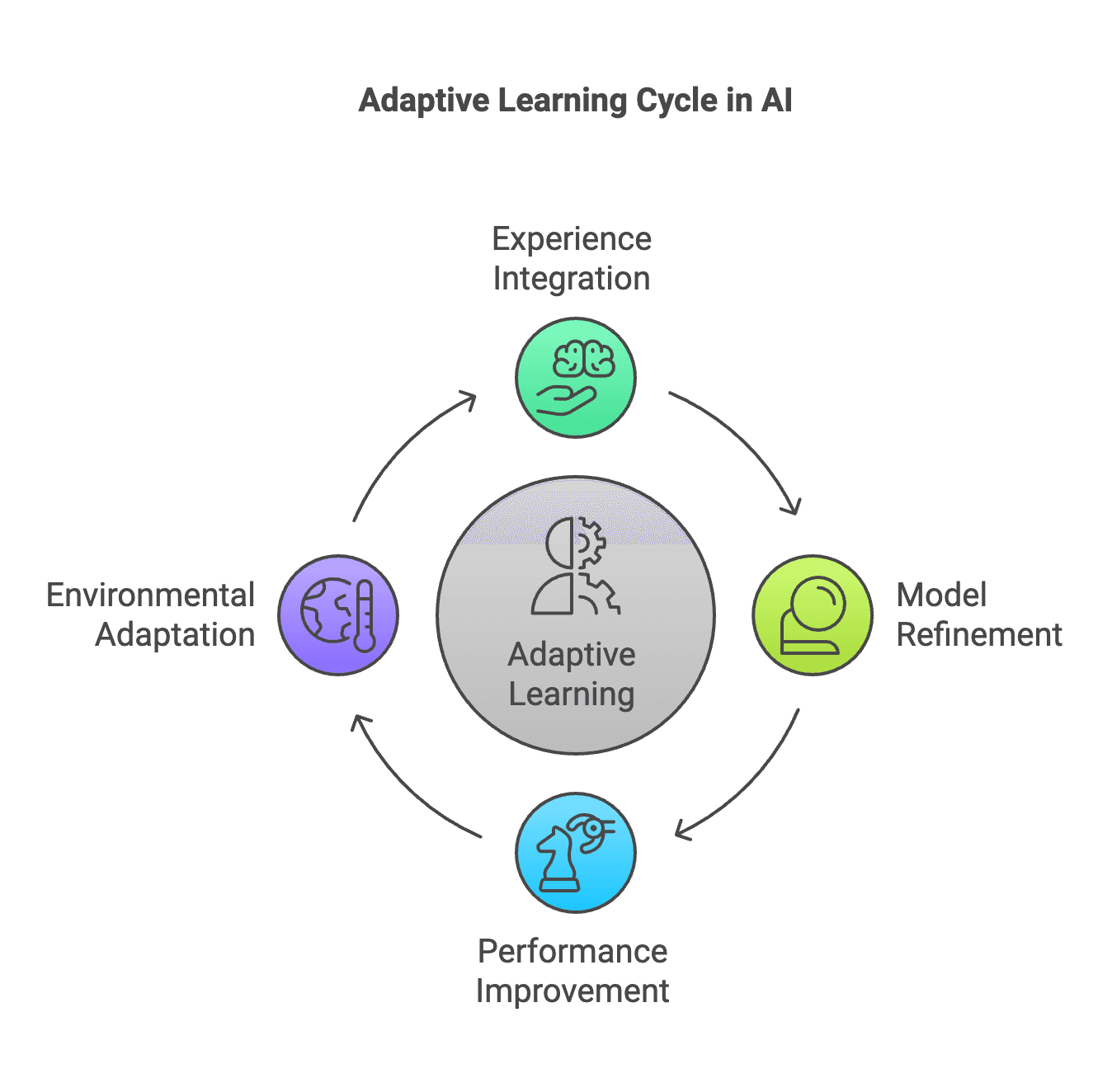At its heart, engineering has always been about one thing: solving problems. Some are clear-cut—load-bearing calculations, circuit stability, manufacturing tolerances. Others are murkier: Should we prioritize cost or resilience? How do we design for unknown user behavior? When does a system become too complex to predict?
Traditionally, engineers tackled these questions with tools that followed rules—equations, simulations, spreadsheets. But now, they work with something more: generative AI that not only follows logic but learns, adapts, and occasionally surprises. The calculator has evolved into a collaborator.
Where once engineers wrestled with uncertainty alone, they now walk into complexity with a machine at their side—one that sees patterns we miss, proposes strategies we'd never imagine, and learns from each decision we make.
To understand this new alliance, we explore three dimensions: predictive diagnostics, adaptive learning, and enhanced creativity. But first, we must frame the types of problems engineers actually face.
From Clear-Cut to Chaotic: Mapping the Terrain of Engineering Problems
Not all problems are created equal. Some follow rules. Others write them. Enter the Cynefin framework, devised by complexity theorist Dave Snowden. It divides challenges into four domains:
- Clear: Cause and effect are obvious. Best practices apply.
- Complicated: Multiple correct answers exist, but require analysis.
- Complex: Patterns emerge only in hindsight. You probe, sense, and respond.
- Chaotic: No visible order. Action precedes understanding.
Generative AI now plays a role in all four. It automates the clear, supports the complicated, navigates the complex, and—sometimes—illuminates the chaotic. This is not just a new tool—it's a new way of thinking.
Trend 7: Predictive Diagnostics – Seeing the Break Before It Happens
"Generative AI doesn't just fix what's broken—it prevents the break, turning risk into foresight and downtime into opportunity."
In the past, diagnostics were a waiting game. Something failed, and you went looking for why. Scheduled maintenance was like superstition—done "just in case," not "just in time." No longer.
With generative AI, diagnostics leap from reactive to anticipatory. Models ingest torrents of sensor data, correlate hidden patterns, and alert engineers before systems drift into failure.
In automotive manufacturing, predictive models reduce unplanned downtime by up to 40%, with AI sensors flagging anomalies invisible to humans. Factories don't just wait for motors to overheat—they adjust torque or shut down the line in milliseconds.
In telecom, AI predicts network congestion before customers feel it. Ericsson's dynamic bandwidth allocation has slashed latency and dropped call rates by 30%, especially in high-traffic zones.
In medicine, AI-enhanced imaging systems detect micro-anomalies in X-rays and MRIs. In oncology, deep learning has increased early cancer detection accuracy by over 12%, often spotting signals even experienced radiologists miss.
These systems don't just inform—they recommend, triggering workflows and guiding interventions. AI transforms failure into foresight.

Figure 1: AI-Driven Predictive Diagnostics: Preventing Failures Before They Happen
AI-powered predictive diagnostics enhance telecom reliability, manufacturing uptime, and early medical diagnosis, shifting industries from reactive fixes to proactive prevention.
(Click image to view full size)
Trend 8: Augmenting Creativity – Redefining How Engineers Think
"Generative AI doesn't just solve problems—it reshapes them, turning complexity into clarity and ideas into innovation at lightning speed."
AI's most surprising gift? Not just its power to automate, but its ability to inspire.
Engineers have long worked within the limits of their mental models, trained intuition, and prior art. Generative AI breaks those boundaries, proposing ideas that no one explicitly taught it—suggesting architectures, configurations, and hypotheses that shift the very definition of what's possible.
In circuit design, AI models like Google's Deep Reinforcement Learning tools have achieved energy savings of up to 80% by rearranging components in ways no human would try.
In software development, tools like GitHub Copilot now generate full function blocks from simple prompts. Early studies show developers finish tasks up to 55% faster, with fewer context switches and higher satisfaction. But the real power isn't speed—it's the ability to spark new patterns of thinking.
In material science, AI-driven exploration tools propose novel chemical compounds for batteries, semiconductors, or medical treatments—sometimes identifying potential breakthroughs years ahead of traditional R&D cycles.
According to the French researchers Armand Hatchuel and Benoît Weil, who developed the C-K (Concept-Knowledge) theory, creativity lives in the tension between what we know and what we imagine. Generative AI thrives in this space, expanding both sides of the equation—proposing new concepts while challenging existing knowledge.
Julian Nolan, founder of Iprova, puts it this way: "Our unique contribution is identifying inventive signals ahead of others, and enabling users to create valuable outcomes in direct response to global daily change." Invention, he suggests, becomes inevitable once the right signal is surfaced. The real differentiator? Who sees it first. That's the power of delegated exploration at scale—not just accelerating engineering, but unlocking ideas before others even know where to look.
This isn't just engineering faster—it's engineering with fresh eyes.
Trend 9: Adaptative Learning – From One-Time Models to Evolving Minds
"Adaptive AI turns every challenge into an opportunity, learning from each moment to build systems that don't just react—they improve, adapt, and anticipate the future."
Classic engineering models are static. They're born, they serve, and they decay. Updating them means starting over. Generative AI, however, learns continuously. It adapts as conditions shift—tuning itself based on new inputs, new rules, new realities.
In energy systems, adaptive AI dynamically balances power supply and demand, integrating wind, solar, and battery storage in real time. The result? Grids that cut waste by 20% and keep lights on even as conditions change minute by minute.
In advanced manufacturing, AI models learn from each production run. At Audi, adaptive systems analyze component variability and suggest real-time process tweaks, boosting throughput by 17% while reducing defects by nearly 30%.
In autonomous vehicles, adaptive learning is essential. Cars must handle edge cases—sudden obstacles, unfamiliar roads, unpredictable weather. AI-driven fleets now gather billions of miles of data, refining decision-making continuously. A sharp curve that stumped one car becomes a solved problem for the entire fleet by the next morning.
This isn't just about efficiency. It's about resilience—systems that get smarter every time the world surprises them.

Figure 2: Adaptive Learning in AI: Continuous Improvement for Engineering
AI-driven adaptive learning enables continuous refinement, integrating experience, optimizing models, and evolving with changing environments for sustained engineering innovation.
(Click image to view full size)
Conclusion
Generative AI redefines what it means to "solve a problem." No longer a solitary process of deduction, engineering becomes a dialogue between human intuition and machine suggestion. The role of the engineer expands—from being the one who answers the question to the one who asks better ones.
But this power comes with responsibility. Predictive models can mislead. Adaptive systems can overfit. Creative suggestions can carry hidden risks. As AI takes on more cognitive load, engineers must act as both interpreters and governors—ensuring solutions are safe, meaningful, and aligned with human goals.
The engineer is no longer a passive technician nor a solitary genius. They are a conductor in a generative symphony, guiding systems that think, learn, and sometimes even dream.
Next, in Trail 4 – Sustainable Tomorrow, we look outward: how this human-AI partnership reshapes not just practice, but purpose—aligning engineering with global equity, sustainability, and ethical clarity.
🌱 Ready to Build a Better Tomorrow?
From solving problems to shaping futures—discover how AI and engineering unite for sustainability.
👉 Explore Trail 4: Sustainable Tomorrow→